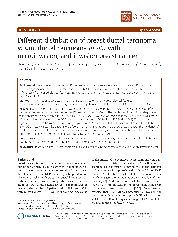摘要
Background: Breast ductal cancer in situ (DCIS) can recur or progress to invasive ductal cancer (IDC), and the interim stage include DCIS with microinvasion (DCIS-Mi). In this article, we attempt to study the study the differences of clinicopathological features, imaging data, and immunohistochemical-based subtypes among DCIS, DCIS-Mi, and IDC.
Methods: In this retrospective study, we attempt to compare the clinicopathological features, immunohistochemical results and imaging data of 866 patients (included 73 DCIS, 72 DCIS-Mi, and 721 IDC). Results: Patients with DCIS and DCIS-Mi were younger than those with IDC (P = 0.007). DCIS and DCIS-Mi often happened in premenopausal women while IDC was opposite (P < 0.001). The incidence of IDC with node-positive was significantly higher than it in DCIS and DCIS-Mi (P < 0.001). We also observed that the Her2-positive was more often found in patients with pure DCIS compared to those with DCIS-Mi and DCIS-I (P < 0.001). There was a significant difference between the four subgroups (Luminal-A, Luminal-B, ERBB2+, Basal-like) from DCIS, DCIS-Mi, and IDC (P < 0.001). Basal-like patients were fewer than other subgroups in DCIS, DCIS-Mi, and IDC. The incidence of the first performance of ultrasound (catheter winded and nodular mass) and mammography (nodular mass) had significantly difference among patients with DCIS, DCIS-Mi, and IDC (P < 0.001).
Conclusions: Different clinicopathological, immunohistochemical, and imaging features among DCIS, DCIS-Mi, and IDC indicate that they are distinct entities. A larger sample size is needed for further study.
- 出版日期2012-12-8
- 单位温州医科大学
